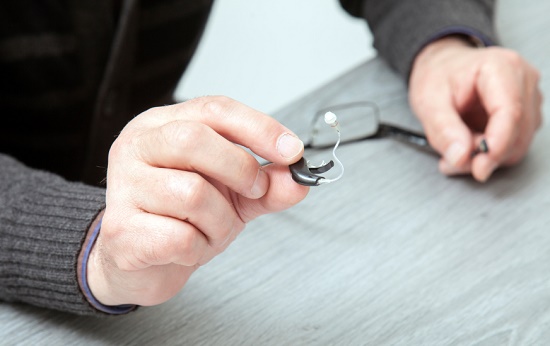
Murphy’s Law informs us that “if anything can go wrong, it will.” A better variant might be that “things will go wrong in any given situation, if you give them a chance.”
In regard to vehicle maintenance, that’s the reason we change the oil in our cars, switch out the filters, and rotate the tires. We’re attempting to preserve our investment and prolong its life.
You should think of hearing aids in a similar manner. If you give things an opportunity to go wrong, they will; but if you’re proactive in your care and maintenance, your hearing aids can endure and perform properly for years.
So what are the things that can go wrong? The following are the three main threats to your hearing aids and what you can do to safeguard against them.
1. Physical damage
Enemy # 1 is physical destruction. Hearing aids consist of fragile electronics that are prone to damage from shock. To protect against this, remember to store your hearing aids in their storage cases anytime you’re not using them.
A good rule of thumb is that your hearing aids should be either in your ears or in the storage case at all times. Leaving your hearing aids exposed on any surface is just inviting Murphy’s Law to come and bump them off. Similarly, when you’re putting in and removing your hearing aids, it’s a good idea to do this over a soft surface in case they fall.
In addition, take the time to check and replace the batteries often. You’re not doing the electronics any favors by forcing the hearing aids function on low battery power.
2. Moisture
Electronic devices and water do not mix, which anyone who’s dropped a mobile phone in the kitchen sink knows all too well. Once submerged, there’s very little that can be done. But it takes a lot less than total submersion in water to ruin your hearing aids.
Water, in the form of mist, can still work its way into the hearing aids and start causing havoc. As a result, you should refrain from using hairspray, bug spray, or any other sprays while wearing your hearing aids. Also, keep in mind that extreme changes in temperature can generate condensation, for instance going from a climate-controlled room to the outdoors. If this happens, ensure that you dry off any wetness that develops.
We also recommend not keeping your hearing aids in the bathroom, as the condensation can create issues. This is yet another reason that your bedside table drawer is probably the ideal place to store your hearing aids when they aren’t in use.
3. Earwax and dirt
Even if you’ve guarded your hearing aids against physical destruction and water with appropriate storage and the prevention of moisture, you’ll still need to protect against adversary # 3: dirt and grime.
Earwax, dust, and debris can accumulate on the hearing aids, blocking the speakers, ports, and other components. To guard against this, 1) maintain proper ear hygiene, and 2) clean and sanitize your hearing aids daily.
Regarding cleaning and sanitizing your hearing aids, ensure that you use only the tools supplied by your hearing professional. Your hearing professional can supply cleaning kits and directions specifically for your type of hearing aids.
Finally, consider purchasing a hearing aid sanitizer. Sanitizers utilize ultraviolet light to thoroughly kill dangerous pathogens, all while supplying a safe place for storage.